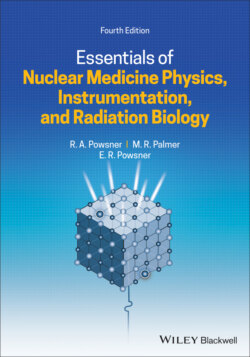Читать книгу Essentials of Nuclear Medicine Physics, Instrumentation, and Radiation Biology - Rachel A. Powsner - Страница 67
Reactor basics
ОглавлениеA general schematic of a reactor is seen in Figure 3.6. A reactor is composed of fuel rods that contain large atoms (typically Uranium‐235, Uranium‐238, or Plutonium‐239) that are inherently unstable. These atoms undergo fission, (see Figure 1.14). Two or three neutrons and approximately 200 MeV of heat energy are emitted during this process. These neutrons leave the nucleus with moderately high kinetic energy and are referred to as fast neutrons. The neutrons are slowed with a moderator such as graphite, water, or heavy water. These “very slow” or thermal neutrons, and to a lesser extent the fast neutrons, in turn impact other fissionable atoms causing their fission, and so forth (Figure 3.7). If this chain reaction were to grow unchecked, the mass would explode. To maintain control, cadmium control rods are inserted to absorb the neutrons in the reactor. They can be further inserted or withdrawn to control the speed of the reaction. Medical nuclides are made in reactors by the processes of fission or neutron capture.
